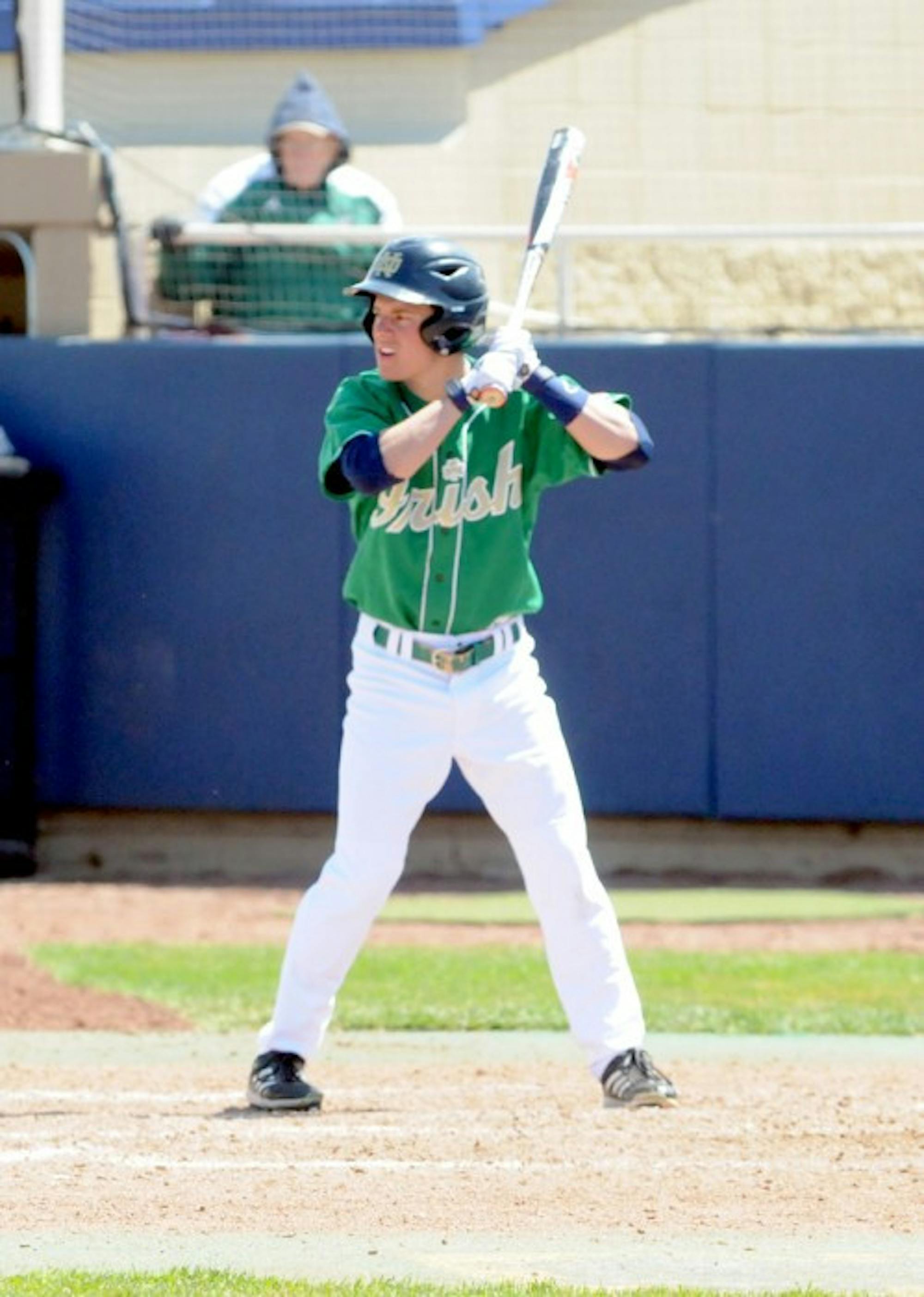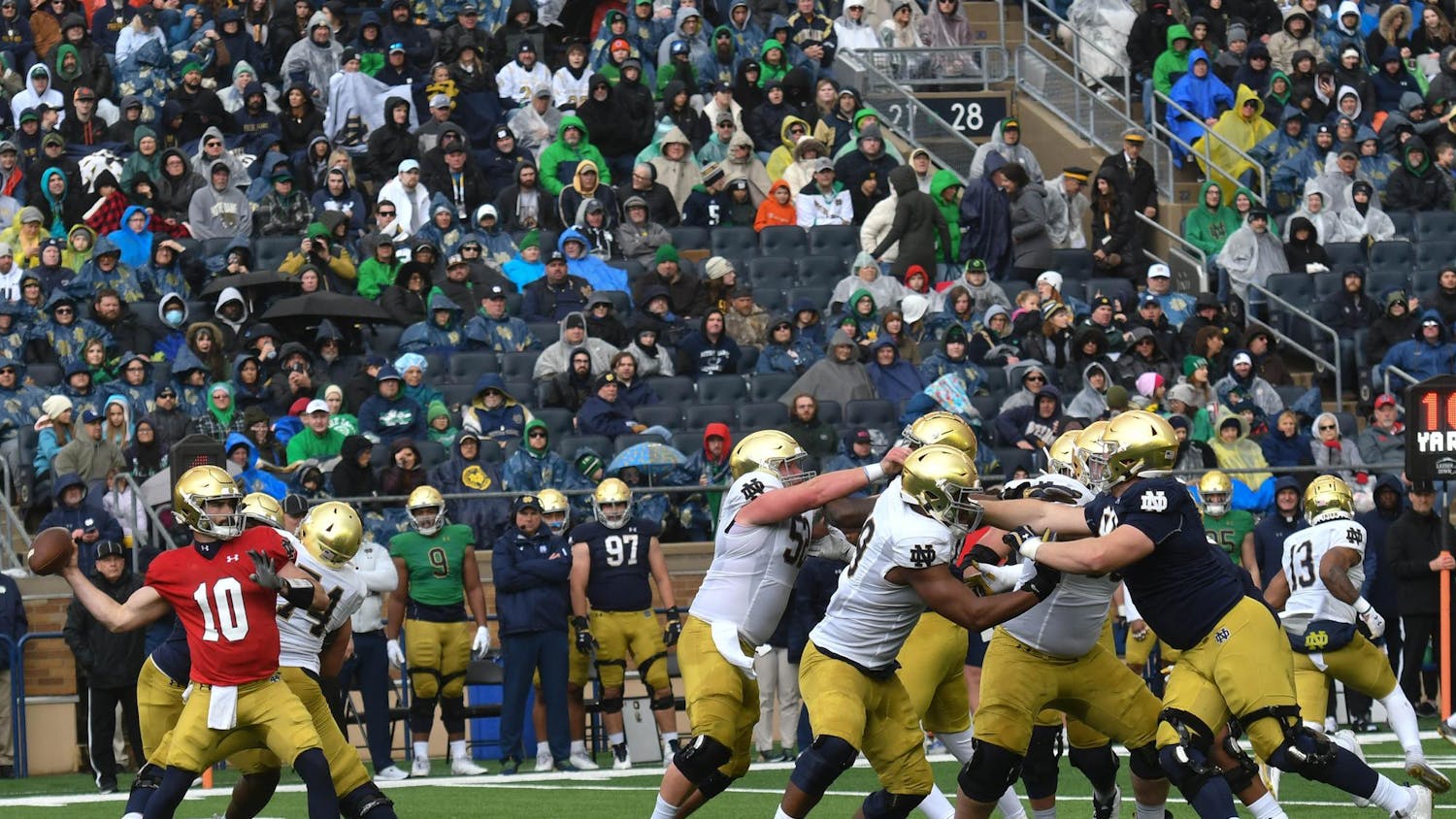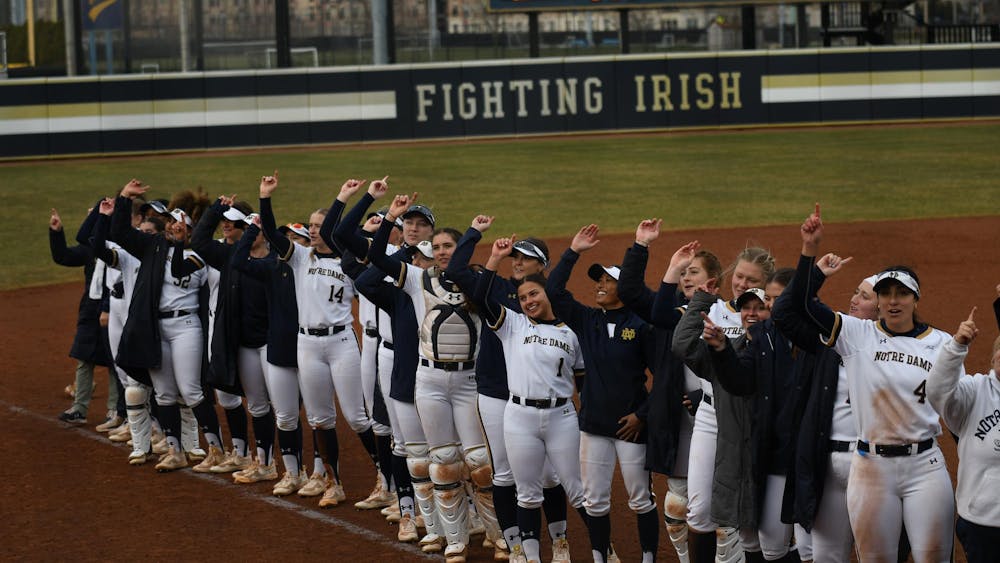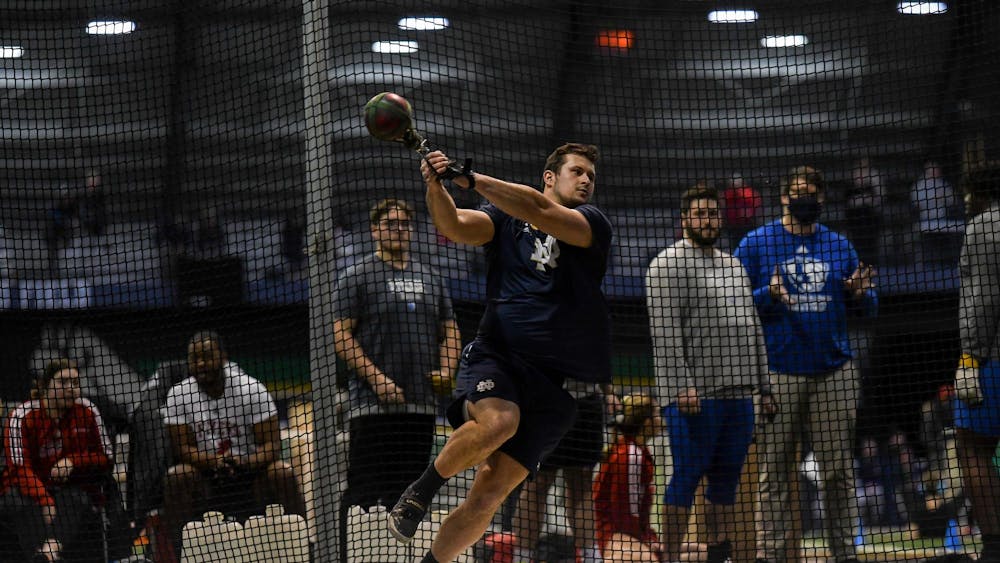In 2010, NCAA teams averaged .94 home runs a game and 6.98 runs per game. Just one year later, those averages dropped to .52 home runs per game and 5.58 runs. In one year, homeruns declined by 42 percent and total runs by 20 percent.
“I think this has become the era of the dead bat,” Irish coach Mik Aoki said. “I don’t think it’s necessarily good for college baseball, to be honest with you, but it’s the reality of the situation. If you look at team ERAs now, if you’re not in the mid-to-low threes, your team has a bad pitching staff. As a team, if you’re hitting .270, you’re prolific. If you’re hitting anywhere near .300 as a team, you’re the college baseball version of the New York Yankees’ Murderer’s Row. I think that’s what it is now.”
These changes are a result of new bat policies employed by the NCAA, as stricter “Bat-Ball Coefficient of Restitution” (BBCOR) standards reduce ball exit speeds. According to NCAA Baseball Rules Committee, the changes were made to maintain the integrity of the game while enhancing player safety.
“At the end of the day, I think it’s going to be really bad,” Aoki said. “This is where we really shot ourselves in the foot as a coaching group, by allowing this change to have swung so far to the other way of the pendulum.”
“Baseball is a game that is filled with failure,” Aoki said. “You take a young kid who is a decent athlete and a decent player, who maybe makes his varsity team as a freshman or a sophomore, but he’s not really that strong. His best bolt, over and over again, is landing in the left fielder’s glove. Sooner or later, there will be a high enough percentage of those kids that will say, ‘I’m going to go play lacrosse or soccer.’ They will want to switch sports to one where the failure isn’t so oppressive.”
This weekend, when the Irish travel to Tallahassee, Fla., to face No. 1 Florida State, the Irish and the Seminoles will combine to have only six players with 20 or more at-bats and a batting average of .300 or better.
“If you think of any corporation, if seven out of the 10 things they try to bring to market every time are failing, they would be out of business. It doesn’t matter the company,” Aoki said. “It’s not like I worry about it for the college player. They are already here; they’ve achieved and they are going to grind at it. I think it’s those kids who are good athletes, who haven’t developed physically yet, who are going to have a hard time getting the ball out of the infield. When they do, it will be caught.”
In last year’s College World Series there were only three home runs hit in 14 games, the fewest since there were just two in 1966. In the 2013 CWS, the cumulative batting average of .234 was the lowest it had been since it was .227 in 1974.
“If you look back, I can think of four balls hit in last years College World Series [that should have gone out of the park], hit by four players who will absolutely be drafted,” Aoki said. “All four were outs. The name of the game now, in a lot of ways, is making productive outs. If you can make productive outs, steal a base, play hit and run, get a guy in scoring position with less than two outs or score a guy with a bunt or a groundball, that’s what it’s all about. In this day and age, if you can get to four or five runs, that gives you a pretty good chance to win a baseball game.”
Last fall, in a survey of coaches, 87 percent said they wanted to make a change to the game. In response, the NCAA announced that they are planning on allowing flat-seamed baseballs starting in 2015. In a recent NCAA study, flat-seamed baseballs traveled, on average, 20 feet further than their raised-seam counterparts.
“I’ve been in college baseball for over twenty years now,” Aoki said. “I’m not advocating for a change back to the minus-5’s and the 21-19 USC versus Arizona State showcase game, but I think this bat change is really incredibly bad for college baseball. Baseball is a harsh, brutal and unforgiving teacher with regards to failure. Baseball, probably more than any other game, is a harsh enough teacher as is.”













